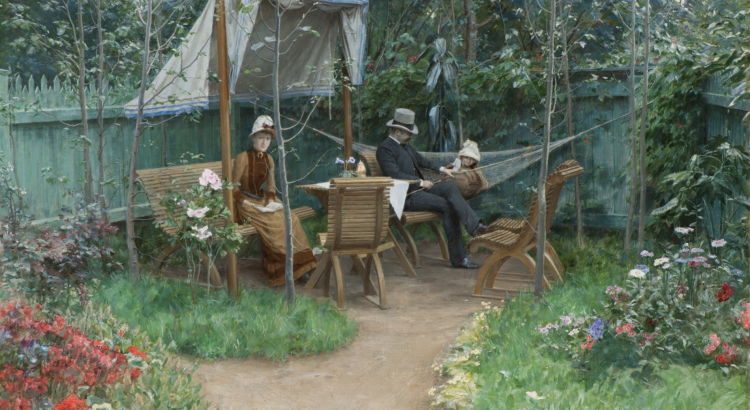The National Nordic Museum has a new exhibit titled From Dawn to Dusk: Nordic Art from Sweden’s Nationalmuseum, a collection of paintings by Danish, Norwegian, and Swedish artists part of Nationalmuseum in the Stockholm, Sweden, collection.
“We began developing relationships with the national museums in the Nordic countries in preparation for our new space. We borrowed a few objects that allowed us to tell more about earlier periods in Nordic history than our collection, which is really strong in the emigration period in the late 19th century,” National Nordic Museum Director of Collections, Exhibitions, and Programs Leslie Anderson said.
Throughout 56 original pieces dating from the late 19th century, From Dawn to Dusk displays a moment of radical change within Nordic art. The exhibition includes scenes of everyday life, portraits, and landscapes by Vilhelm Hammershøi, Hanna Hirsch-Pauli, Carl Larsson, August Strindberg, Anders Zorn, and many others.
Projected by the curators of the National Nordic Museum and Sweden’s Nationalmuseum as an immersive experience, the exhibition organization goes far beyond its chronological placement.
The first gallery looks at artists who had not yet traveled to France, an international center for artistic development, and the works that resulted from their time in France. This section focuses on landscapes before these artists discovered painting in the open air and how that totally transformed their work.
“I really had the great pleasure of thinking about this exhibition in our space and how we would present it, even the elements of design, all of the work that goes into thinking about how visitors will experience the arts from the selection of the color on the walls to thinking about which objects are placed next to each other and how we were going to tell the story in the most harmonious and seamless way,” Anderson told My Ballard.
In the second part of the gallery, visitors can follow two possible tracks. On one side, artists’ self-portraits and family members’ portraits highlight the community these creative individuals are operating within and the networks that were so integral to their development.
The second possible path overlooks the changing notions of children in the late 19th century. At this time, inspired by the writings of Rousseau, artists started to think more about the lives of children, their openness and receptiveness to new ideas, making them a predominant art subject in this period.
“They were subjects that were very close to the artists. You have a depiction of Göran, Hirsch-Pauli’s son, for instance, or her daughter. There’s a kind of great connection to the family unit. So you get a sense of the personal and professional lives of the artists in the second section,” Anderson said.
The third section of the exhibition focuses on the landscape narrative and how landscapes became a critical subject matter for artists who went to France and then came back to the Nordic region. This part of the gallery begins with symbolism and the works that represent solitary figures in the landscape or in the interior environments and ends the exhibition with paintings focused solely on the landscape.
“It’s a period in which the artists are starting to look inward for inspiration and reinterpret the landscape, sometimes kind of removing themselves from reality in terms of what they observe with their eyes, and kind of see it more with their soul,” Anderson said.
“From Dawn to Dusk beautifully captures this moment, this kind of emphasis on light and nature, inspiring artists. The experiences of being there, a kind of emotional experience rather than an optical one.”
The National Nordic Museum is located at 2655 NW Market Street and opens Tuesday through Sunday from 10 a.m. to 5 p.m. Visitors can choose to purchase tickets at the admissions desk during open hours or in advance at the museum’s website.

Recent Comments